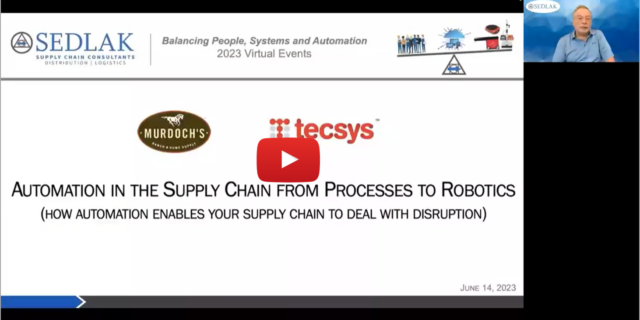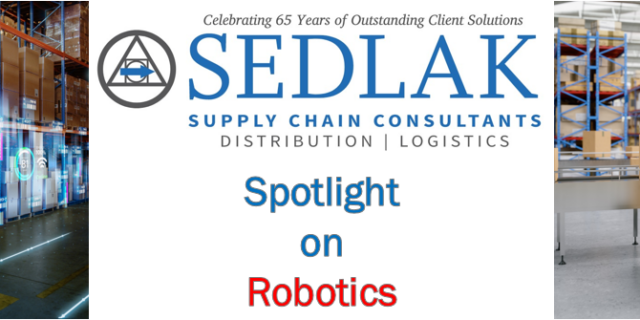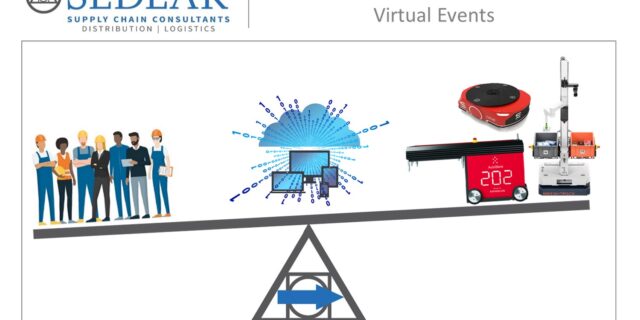RFID Advantages Over Barcodes in the Distribution Center
January 9, 2018 By: Louis J. Cerny | Topics: IT Solutions, Productivity & Labor, Retail & CPGRadio Frequency Identification (RFID) tags, which have been around for decades, have largely been ignored in distribution environments in favor of less expensive and more universal barcode labels. Recently, RFID has been getting more attention in retail stores, where it has dramatically improved inventory management. RFID also may bring significant advantages to the distribution center in certain applications.
How RFID Works
RFID is an integrated circuit equipped with a memory chip and an imprinted antenna that transmits data when triggered by a reader device. Instead of a laser collecting reflections off a printed barcode label, RFID uses radio frequencies to read from and write to the chip. Passive tags rely on the reader to activate and supply the power needed to transmit data. Active tags have a battery, which makes them larger and more expensive but enables them to be read at longer distances. RFID tags can be as small as a fingernail or as large as a brick.
RFID Advantages
RFID tags offer significant benefits not provided by traditional barcode labels:
- No Need for Line of Sight – Unlike barcodes, RFID tags do not require line of sight scanning and can be read in bulk (e.g., by the pallet). This means an RFID reader on a receiving conveyor or dock door can more rapidly input every item into inventory without hand-scanning each label or positioning each item just-so on a conveyor for a barcode scanner. RFID tags can also be read at much greater distances – up to 300 ft. in certain applications. In fact, the Massachusetts Institute of Technology recently equipped drones to read RFID tags to enable faster, more frequent, and labor-free inventory audits in large warehouses. The potential drawbacks are interferences to the radio signals, which include scanning through metal or water, reading multiple tags inside a densely packed carton, or scanning in environments where multiple readers activate the same tags simultaneously.
- Higher Durability – Barcode labels can fall off, tear, smudge, wrinkle, or wear away and cannot be exposed to weather or other harsh conditions. By contrast, certain RFID tags are not only weatherproof, but can survive chemical exposure and extreme high temperatures (e.g., sterilization, autoclave cycles). RFID tags can also be paired with a barcode label
- Increased Data Capture and Security – Barcodes typically are limited to 20 characters of information. An RFID tag can contain up to 100 times more data, including product origins, lot, serial number, manufacturer, vendor, and expiration dates. More expensive tags have read/write capabilities that can enable data capture for real-time location in the supply chain, shipping history, maintenance, recall events, and other life cycle information. They are more difficult to duplicate, can be encrypted, and readers can automatically detect when an item leaves a secure area.
- Improved Productivity – RFID tags can be read at phenomenal speeds without any labor. RFID readers can scan up to 200 tags simultaneously, so once the technology is implemented, labor requirements for certain functions can fall dramatically and inventory processes that used to require large blocks of time can be accomplished in seconds or minutes. Barcodes, by contrast, must be scanned individually and are much more labor-intensive.
RFID Applications
Based on these benefits, some operational reasons to consider RFID technology in the distribution center include:
- Large volume operations
- Highly automated operations
- High value assets
- Assets that are moved frequently
- Mixed pallet or serialized product
- Significant data tracking requirements for product
RFID Challenges
The biggest hindrance in implementing RFID technology is cost – both for the tags and the scanning equipment. Barcode labels are substantially cheaper – especially at the item level. And, unlike universal barcoding, RFID tag variances across countries may require multiple systems to track product in an international supply chain.
In order to maximize the visibility enabled by RFID tags, a company not only needs to outfit its facilities for readability, but also gain user compliance from its suppliers, carriers, and customers. Managing all of the additional data may also be a challenge.
RFID implementation requires careful planning and is best managed in stages to allow testing and validation that it meets expectations for the application. A thorough ROI analysis is required to determine if RFID tagging is a good fit for your operation.
Since 1958 Sedlak has provided independent, innovative and actionable distribution solutions to retailers, 3PL providers, wholesalers and healthcare providers. Our precision data analytics, focus on process improvements, and intelligent use of technology help companies achieve operational efficiencies and satisfactory return on investment. To learn more, complete the Contact Us form below.







